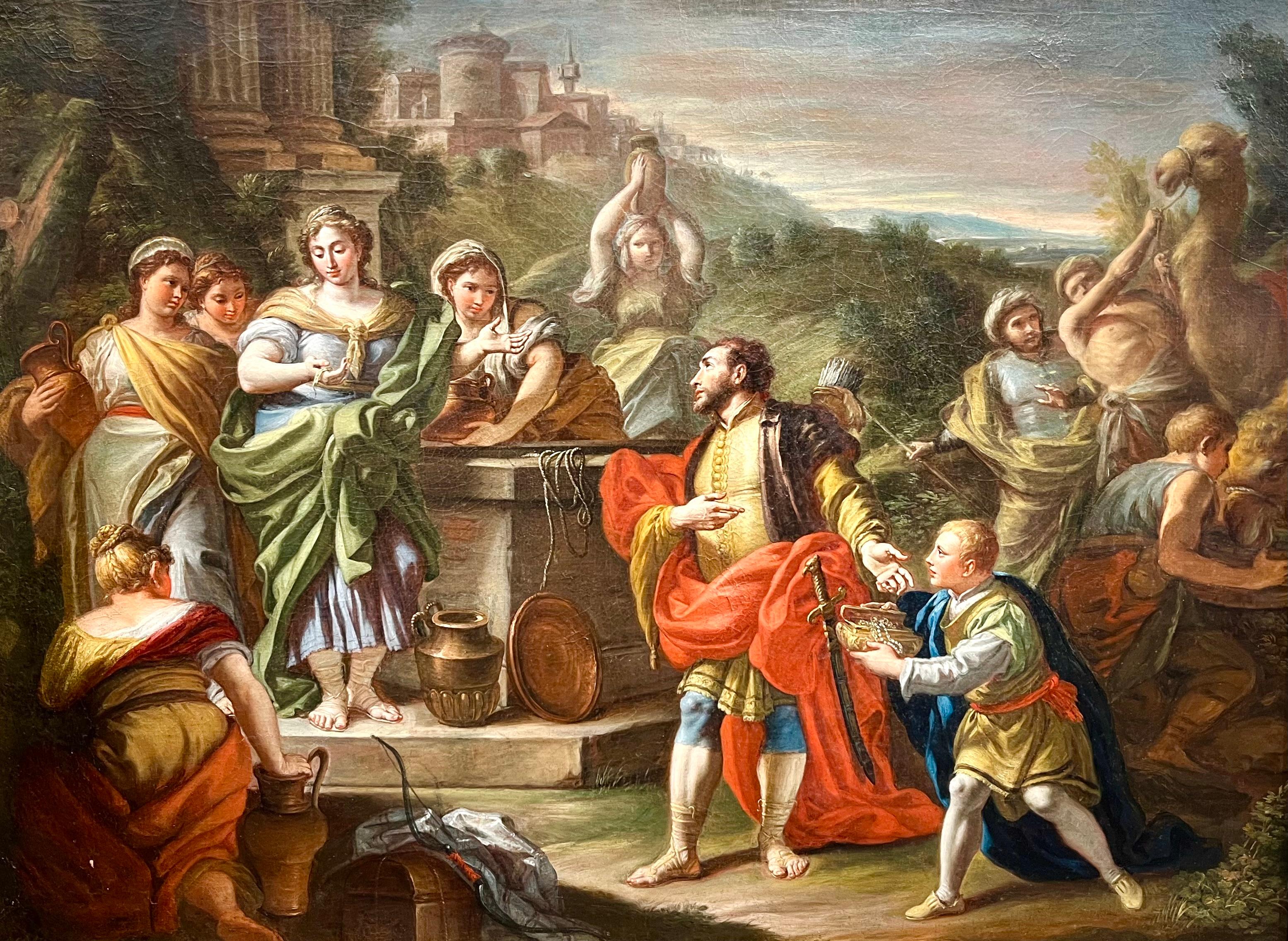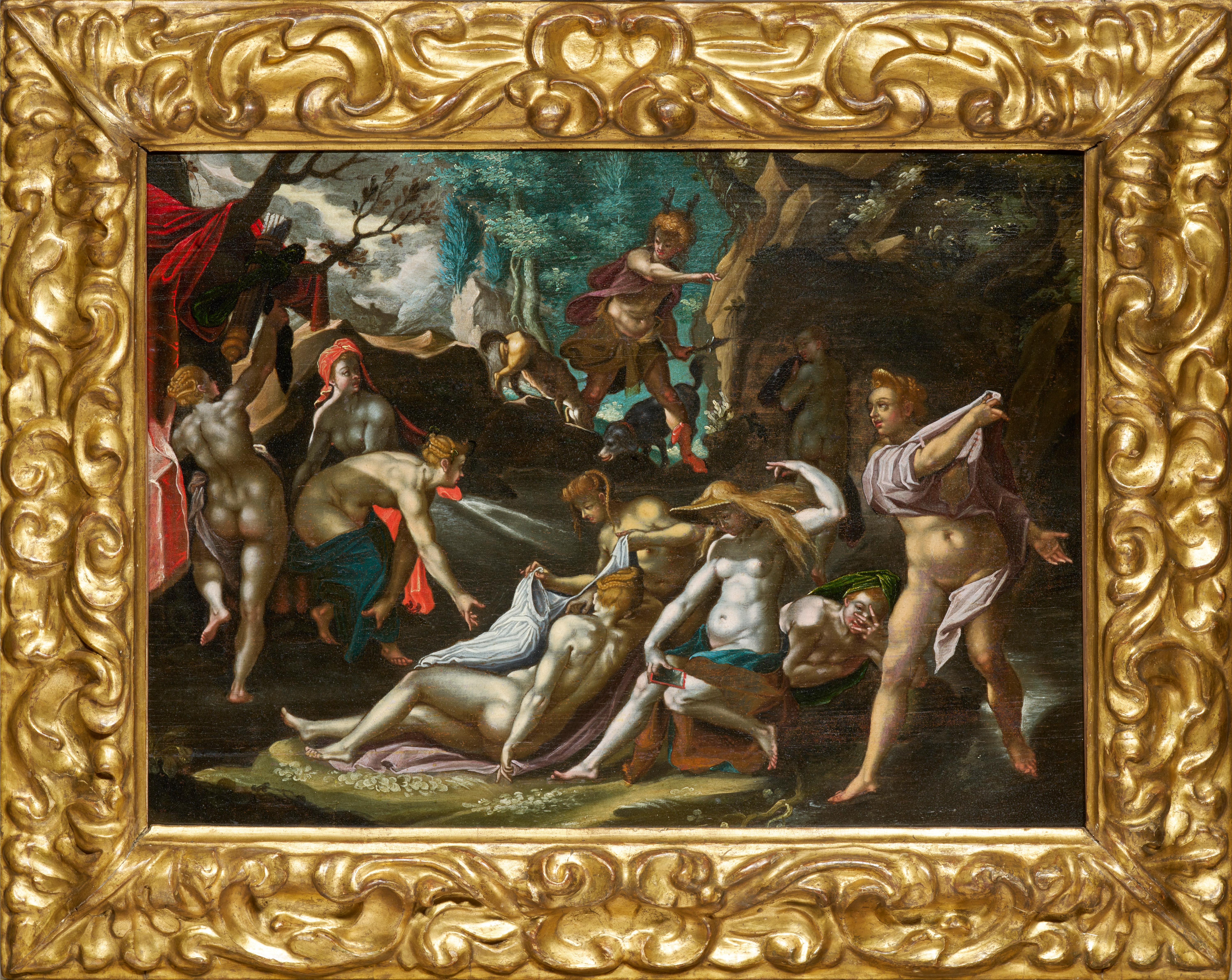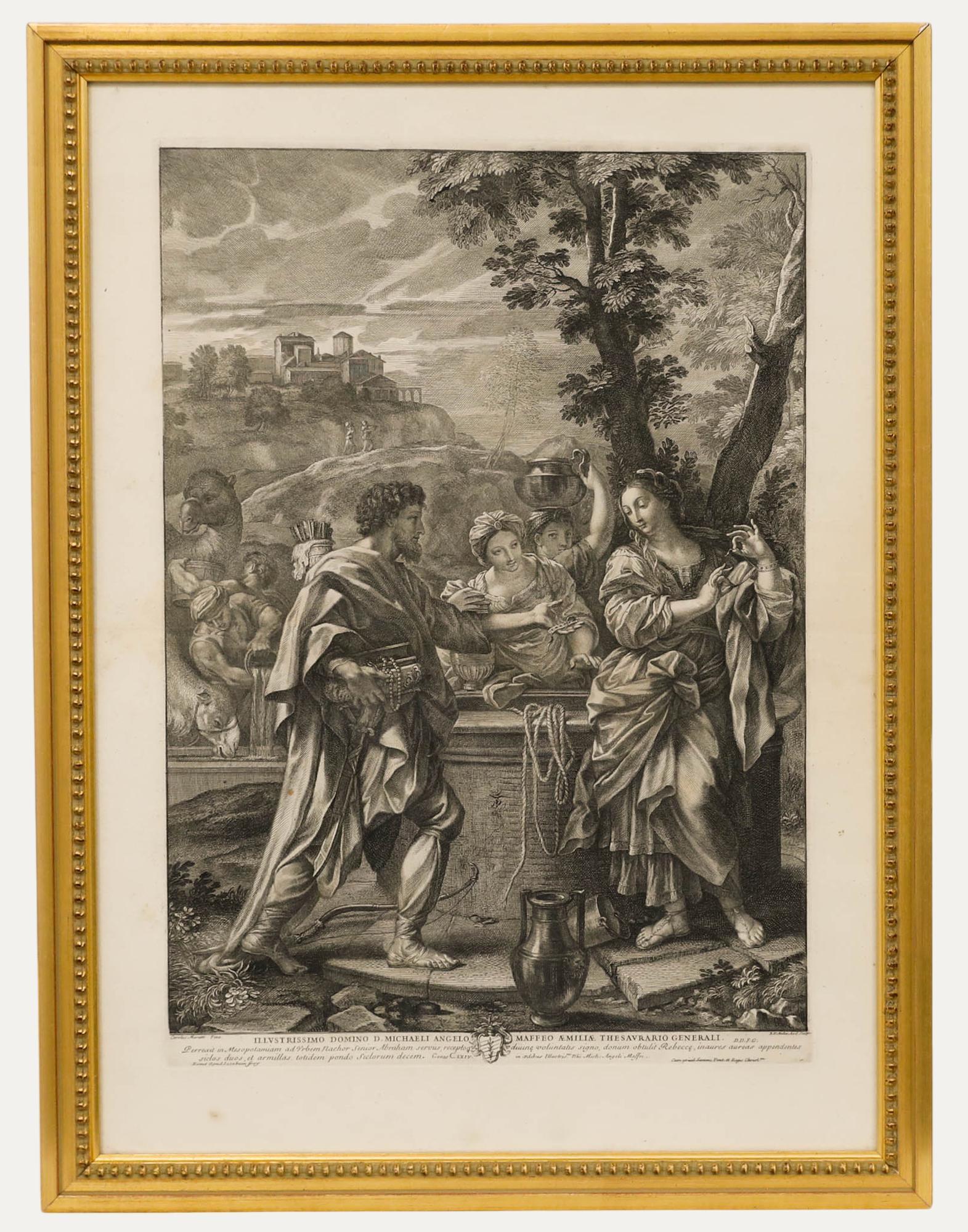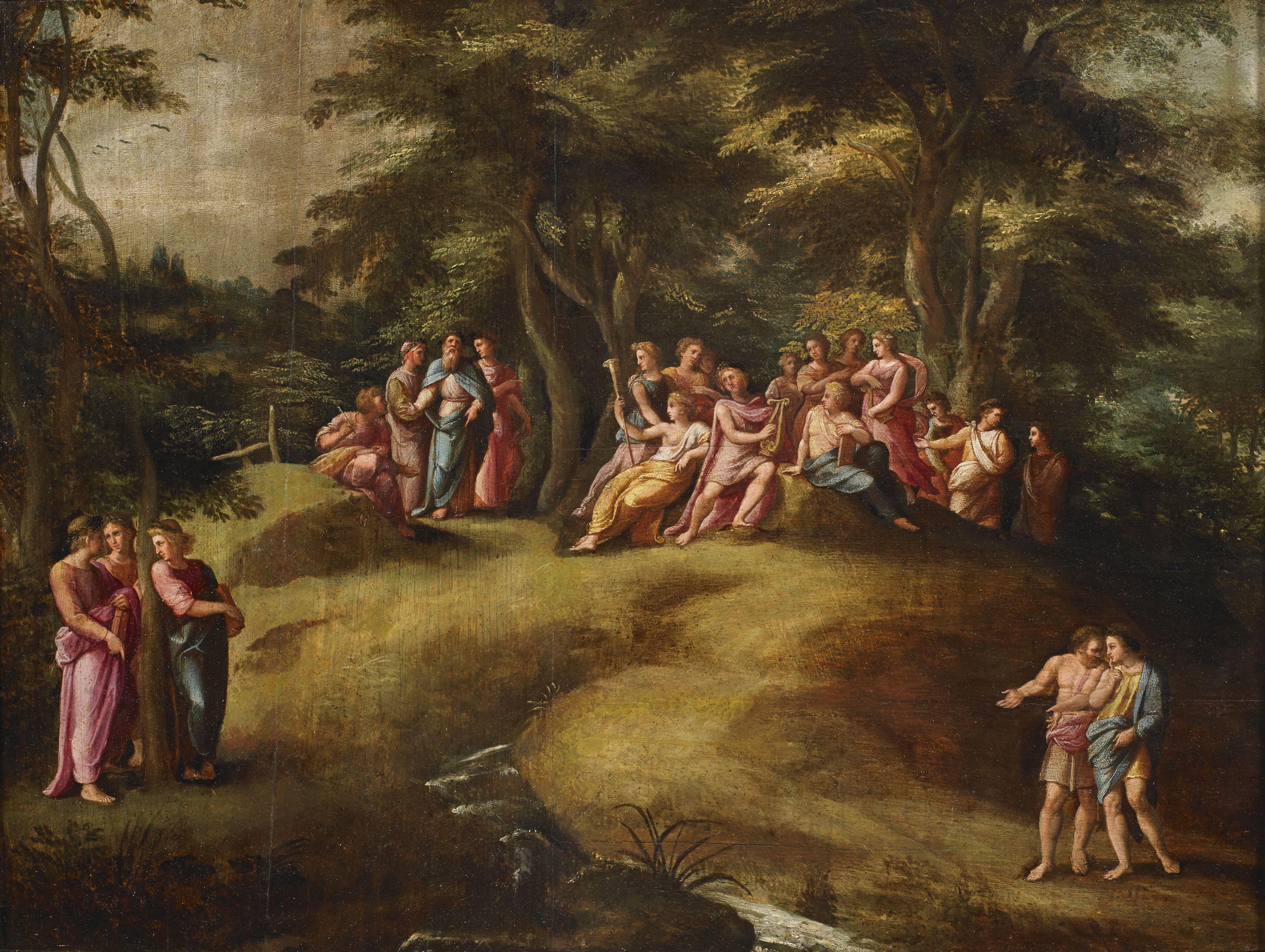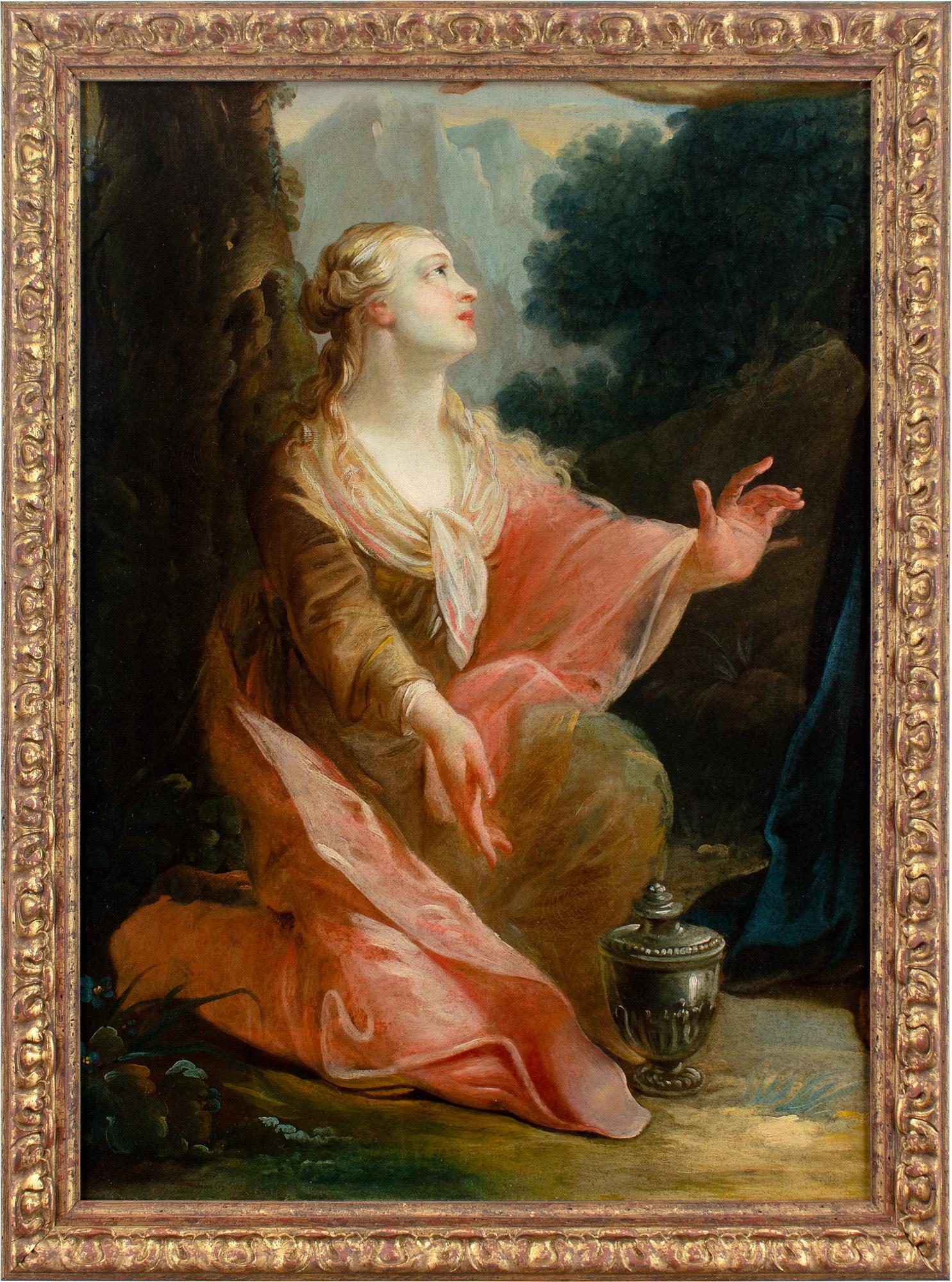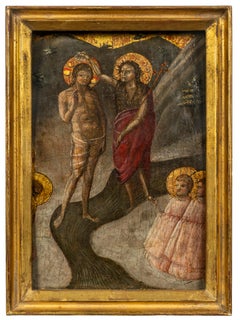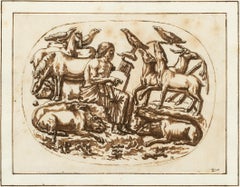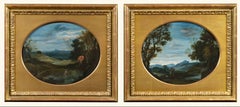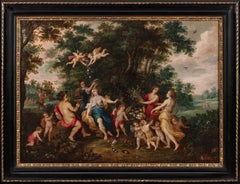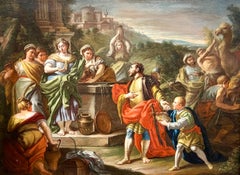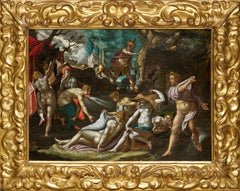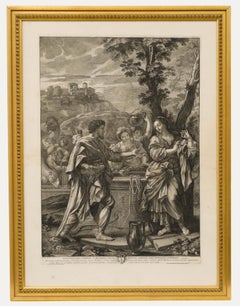Artículos similares a Rebecca at the Well
¿Quieres más imágenes o vídeos?
Solicita imágenes o vídeos adicionales al vendedor
1 de 4
Master of the Apollo and Daphne LegendRebecca at the Wellca. 1500
ca. 1500
39.202,91 €
Acerca del artículo
Provenance:
Dr. James Henry Lancashire, Manchester-by-the-Sea, Massachusetts, by 1925; probably by descent to:
Private Collection, Cumberland Foreside, Maine, until 2018
This unpublished panel is a characteristic work of the Master of the Apollo and Daphne Legend, an anonymous Florentine painter in the circle of Bartolommeo di Giovanni, Domenico Ghirlandaio, and Sandro Botticelli. The artistic personality of the Master of the Apollo and Daphne Legend was independently recognized by Everett Fahy and Federico Zeri at roughly the same moment in time. Fahy originally dubbed this artist the Master of the Ryerson Panels but later adopted Zeri’s name for the artist, which derives from his eponymous works from the Samuel H. Kress collection (Figs. 1-2). Fahy posited that the artist was most likely a pupil of Ghirlandaio active from roughly 1480 to 1510, and that he may be identifiable with one of Ghirlandaio’s documented pupils to whom no works have been securely attributed, such as Niccolò Cieco, Jacopo dell’Indaco, or Baldino Baldinetti. The present painting was first attributed to this master by Everett Fahy in 1989, who became aware of its existence only after publishing his definitive studies on the artist.
The surviving body of work by the Master of the Apollo and Daphne Legend is largely composed of series of panels treating the same theme. In addition to the works illustrating the legend of Apollo and Daphne, there are also series on the themes of Susanna and the Elders and the story of Saint Joseph, among others. The subject of the present panel is drawn from Genesis 24, the story of Isaac. It is possible that our painting relates to another work by the artist depicting the Sacrifice of Isaac formerly in the collection of E. A. McGuire in Dublin, Ireland (Fig. 3), and that these two panels were originally part of a decorative scheme based on the story of Isaac.
Although the Master’s paintings of this type have traditionally been considered painted fronts of wedding chests, known as cassoni, the scale of these paintings and the fact that they are often part of a series indicates that they are more likely spalliera panels—paintings set into furniture or the wainscoting of a room. The biblical episode depicted in this painting centers on the theme of marriage, which suggests that this work was likely commissioned for the domestic interior of a newly married couple. The Master has transcribed into paint even the minute details of this Old Testament story, in which Abraham sends a servant to travel by camel to the land of his father and seek out a wife for his son Isaac. The servant is here shown at the well where he encounters Rebecca. As in the biblical account, Rebecca is shown offering water to the servant and his animals—which she delicately pours into a basin—and he in turn offers her jewelry.
A recent cleaning of the painting has revealed the camel paddle leaning against a rock in the lower left, which had been obscured by old overpaint, as well as several pentimenti in the camel’s feet, Rebecca’s pitcher, her proper left shoulder, and the hill in the upper right. Also now visible is the artist’s underdrawing for a structure in the right background, which ultimately was excluded from the final composition.
This painting was in the collection of Dr. James Henry Lancashire in Massachusetts in the early twentieth century. The only known documentation of the work is an image made of it during a photographic campaign undertaken by the Frick Art Reference Library in 1925. Although it was then classified as Umbrian School, Everett Fahy encountered the photograph in the Frick photographic archive in 1977 (shortly after the publication of his dissertation on the followers of Ghirlandaio) and recognized this work as by the Master of the Apollo and Daphne Legend.
The painting does not appear in either of the sales of the Lancashire collection. It may have descended in the family before reappearing in 2018. Although nothing is known about the provenance of the painting prior to it being in the Lancashire collection in 1925, it is possible that the painting was acquired from the Florentine dealer and tapestry restorer Giuseppe Salvadori. The only other known early Italian paintings from the Lancashire collection were purchased from Salvadori between 1924 and 1925. It is therefore likely that the present panel was purchased from Salvadori as well.
- Creador:Master of the Apollo and Daphne Legend
- Año de creación:ca. 1500
- Dimensiones:Altura: 63,19 cm (24,875 in)Anchura: 114,94 cm (45,25 in)
- Medio:
- Movimiento y estilo:
- Época:
- Estado:
- Ubicación de la galería:New York, NY
- Número de referencia:1stDibs: LU1027005632
Sobre el vendedor
5,0
Vendedor reconocido
Estos prestigiosos vendedores son líderes del sector y representan el escalón más alto en cuanto a calidad y diseño de artículos.
Establecido en 1997
Vendedor de 1stDibs desde 2012
22 ventas en 1stDibs
Tiempo de respuesta usual: 8 horas
- EnvíoRecuperando presupuesto…Envío desde: New York, NY
- Política de devolución
Partes de esta página se han traducido automáticamente. 1stDibs no puede garantizar la exactitud de las traducciones. El inglés es el idioma predeterminado de este sitio web.
Garantía de autenticidad
En el improbable caso de que haya algún problema con la autenticidad de un artículo, ponte en contacto con nosotros en un plazo de 1 año para recibir un reembolso total. DetallesGarantía de devolución de dinero
Si tu artículo no es como se describe, sufre daños durante el transporte o no llega, ponte en contacto con nosotros en un plazo de 7 días para recibir un reembolso total. DetallesCancelación dentro de las 24 horas
Tienes un período de gracia de 24 horas para reconsiderar tu compra, sin preguntas.Vendedores profesionales aprobados
Nuestros vendedores de primera clase deben cumplir estrictos estándares de servicio para mantener la integridad de nuestros anuncios.Garantía de igualación de precios
Si encuentras que un vendedor publicó el mismo artículo por un precio menor en otro lado, igualaremos ese precio.Entrega global de confianza
Nuestra red de transporte de primera ofrece opciones de envío especializado en todo el mundo, que incluye envío personalizado.Más de este vendedor
Ver todoBautismo de Cristo
Procedencia:
Achillito Chiesa, Milán
Luigi Albrighi, Florencia, antes del 1 de julio de 1955
con Marcello y Carlo Sestieri, Roma, 1969
Colección privada, Connecticut
Expuesto:
Muse...
Categoría
siglo XV y antes, Antiguos maestros, Pinturas figurativas
Materiales
Témpera, Panel de madera
Orfeo y los animales, estudio según un antiguo bajorrelieve
Inscripción "55" y "218" en la parte inferior derecha
Marca de agua: Heawood 1351
Tumbado en el histórico monte Cassiano Del Pozzo
(Montaje tipo A, 531 x 402 mm)
Procedencia:
Enc...
Categoría
siglo XVI, Barroco, Dibujos y acuarelas figurativos
Materiales
Papel, Tinta, Lapicera
Dos escenas de Diana y Acteón (un par)
Por Giovanni Battista Viola
Procedencia:
Robert L. y Bertina Suida Manning, Nueva York, hasta 1996
Colección privada, EE.UU.
Giovanni Battista Viola nació en Bolonia y estudió allí con Annibale Carracci, a ...
Categoría
siglo XVII, Barroco, Pinturas de paisajes
Materiales
Cobre
Alegoría de la abundancia
Pintado en colaboración con Hendrick van Balen (Amberes, 1575 - 1632).
Procedencia: Colección privada, Uruguay, desde la década de 1930.
Hijo mayor de Jan Breughel el Viejo, Jan el...
Categoría
siglo XVII, Antiguos maestros, Pinturas
Materiales
Cobre
Un capriccio arquitectónico con la predicación de un apóstol
Por Giovanni Paolo Panini
Procedencia: Santambrogio Antichità, Milán; vendido, 2007 a:
Filippo Pernisa, Milán; por quien fue vendido, 2010, a:
Colección privada, Melide, Suiza
De Primi Bellas Artes, L...
Categoría
siglo XVIII, Antiguos maestros, Pinturas figurativas
Materiales
Lienzo, Óleo
Ester en la Casa de las Mujeres de Asuero
Por Artus Wolfort
Nacido en Amberes, Artus Wolffordt recibió su formación en Dordrecht, donde se convirtió en maestro en 1603, a la edad de veintidós años. Regresó a su ciudad natal en 1615 e inicial...
Categoría
siglo XVII, Antiguos maestros, Pinturas
Materiales
Óleo, Panel
También te puede gustar
Rebeca en el pozo
Nicola Maria Rossi plasma magistralmente el relato bíblico de Rebeca y Eliezer en el Pozo, una historia del Libro del Génesis. En esta escena, Eliezer, el criado de Abraham, llega a ...
Categoría
siglo XVIII, Antiguos maestros, Pinturas figurativas
Materiales
Lienzo, Óleo
Diana y Acteón, pintura manierista según Joseph Heintz el Viejo
Este cuadro nos sedujo con sus ricos colores. Representa a Diana y a sus compañeras sorprendidas por Acteón, y se inspira en un grabado de Aegidius Sadeler II realizado a partir de u...
Categoría
siglo XVII, Antiguos maestros, Pinturas de desnudos
Materiales
Óleo, Panel de madera
Robert van Audenaerde según Carlo Maratti - Grabado, Rebeca en el pozo
Encantador grabado del siglo XVIII que representa la escena religiosa de Rebeca en el Pozo. Inscrito en la placa. Presentado en un marco dorado. Sobre el papel.
Categoría
principios del siglo XVIII, Impresiones figurativas
Materiales
Grabado
San Juan Bautista Pintura Pasinelli Siglo XVII Óleo sobre lienzo Viejo maestro
Lorenzo Pasinelli (Bolonia, 1629 - 1700)
Sermón de San Juan Bautista Hacia 1650.
Óleo sobre lienzo 115 x 154 cm Con bastidor 136 x 174 cm
Procedencia Milán, Porro 6 de junio...
Categoría
siglo XVII, Antiguos maestros, Pinturas
Materiales
Óleo
20.696 € Precio de venta
Descuento del 20 %
Siglo XVI Parnaso Biagio Pupini llamado Biagio delle Lame Muses Óleo sobre tabla
Este cuadro (en excelente estado de conservación y de fina factura ejecutiva, atestigua la enorme
suerte de las invenciones de Rafael en los años posteriores a su muerte: de hecho, s...
Categoría
siglo XVI, Escuela italiana, Pinturas figurativas
Materiales
Óleo, Panel
Escuela Veneciana del Siglo XVIII, María Magdalena, Noli Me Tangere
Este fragmento de óleo italiano de finales del siglo XVIII representa a María Magdalena arrodillada junto a una vasija de alabastro. Arriba se ve parcialmente la mano de Cristo, junt...
Categoría
siglo XVIII, Escuela italiana, Pinturas figurativas
Materiales
Óleo, Lienzo
